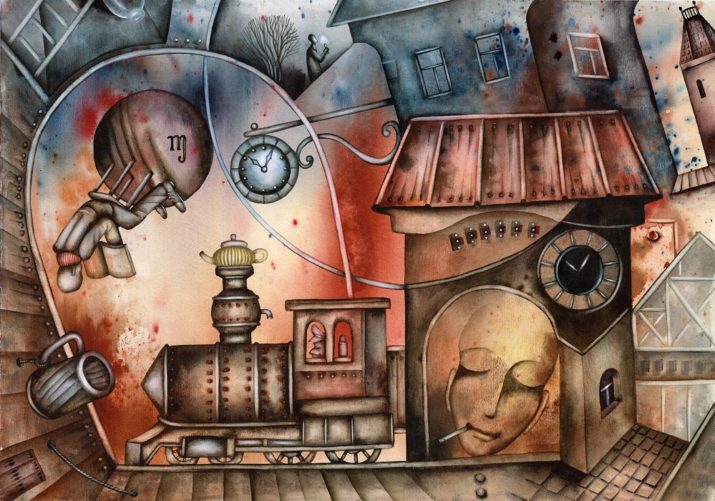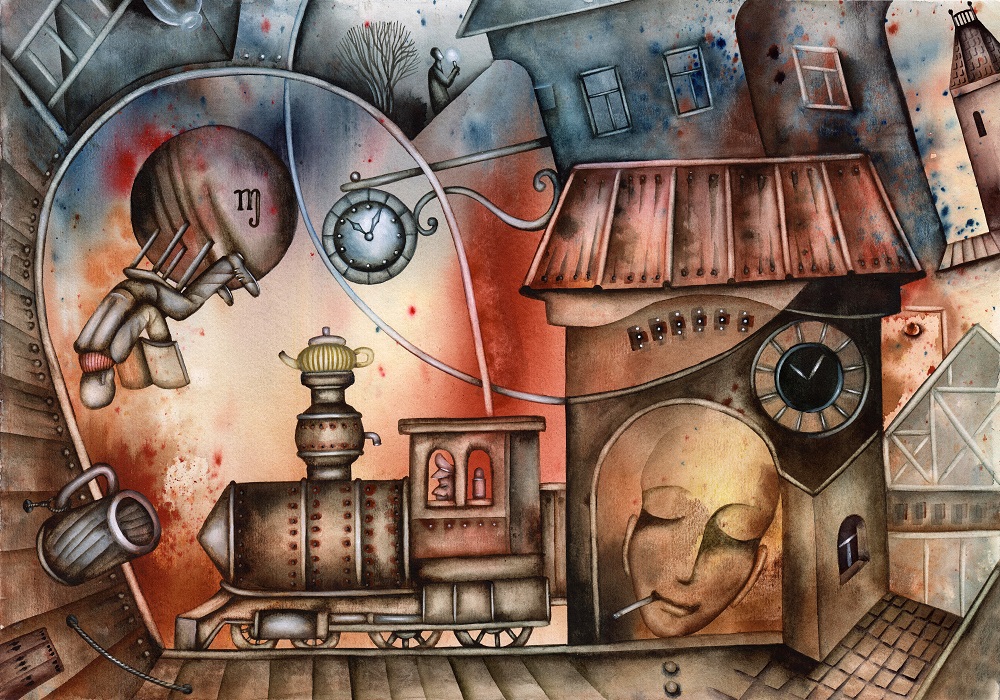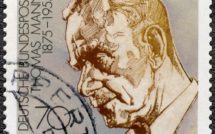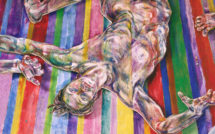

This is part of our special feature Memory and the Politics of the Past: New Research and Innovation.
What will the future historian write about forced migration in and around the Mediterranean during the second decade of the twenty-first century? What connotations will be attached to Lampedusa, Lesvos, Kos, Sicily, and the Aegean Sea, regarding the perilous journeys of the migrants to reach a place of relative safety in Europe? While the spotlight often falls on those that lost their lives in the attempt, the story of those that made it remains to be told.
Migration has been a challenging topic for historians.[1] The history of migration is usually approached within the discursive paradigm of national history, either referring to the national subjects who left the homeland or referring to the “aliens” that settled in its territory. However, in both versions, the story revolves around the nation state and the policies it developed. Such approaches, though, strip migrants and refugees from their agency. The voices of the migrants are rarely heard, and if so, it happens mainly in the context of ethnographic and anthropological approaches, which places them a priori at the margins of history. In history textbooks, migration remains a separate chapter, complementary to those referring to the history of the nation – the story of people that are at the margins of the national history shaping communities of “otherness.” Approaching the history of migration in this way is problematic, because it conceptualizes migration as independent from the history of the nation-state. A growing body of scholarly literature, especially on population displacement connected to the two World Wars, argues that migration and refugee-hood are phenomena situated at the very core of shaping of the modern nation state, connected with the emergence of a new technologization of governmental power. In its turn, this new governmental technologies triggered structural transformations in the nation states, spanning from humanitarian aid, social security, and public health to refugee/concentrative camps. In this context, instead of being perceived as subjects without agency, such approaches (that mainly derive from anthropological research) underline that newcomers follow self-constituting practices in different settings of power so as to become citizens. Part of such practices was the shaping of a narrative about the past that would facilitate their inclusion in the new context.
But which past is useful and how is it made relevant? Andreas Huyssen has argued that, at the beginning of the twenty-first century, modernity has brought a compression of time and space, and that we think the past through a memory that is increasingly without borders, expanding our horizons of time and space beyond the local, the national, and even the international.[2] In the increasingly dominant context of globalization of the twenty-first century and the population movements it entails, preexisting contexts of memory cultures that developed within the frameworks of nation states seem too narrow to contain the memory of a population on the move. Twentieth century static definitions of memory and memory-scapes (such as Pier Nora’s lieux de memoire) seem to give their place to dynamic constellations of identification and representation of the past.[3] This, however, does not mean that national memories are erased, but that they are transformed in the era of globalization, so as to combine with pre-existing elements and to form something new.[4] How do people that are part of the big population movements of the twenty-firstcentury conceptualize their position between their past and the future that is expected but not yet here? Where do they position themselves in the new web of ethical, political, and social questions of identification?[5]
This article is based on life stories collected by migrants and refugees that settled in Greece after crossing the Mediterranean Sea in the course of the last five years. They come from different countries of Africa and Asia, are in different life stages and of different social status, but connected through their affiliation with an Athens based NGO, Network for Children’s’ Rights, who had the initiative for the oral history project. The interviews were semi-structured, in the sense that they mostly consisted of open-ended questions. The topics they addressed included the memory of living in their homelands, the reasons that they left and the expectations they left with, the journey, the memories of the first periods of their life in Greece, difficulties they found and networks they developed, the cultural context within which they live, their relations with those left behind, their dreams for the future, etc. In what follows, I will focus on two of the topics that seems of interest about the way they conceptualize their past (national, cultural, collective, or personal) under the light of their migration experience and inscribe it in the context of their present lives: “travelling memories” and “practical past.”
Traveling Memories
Maurice Halbwachs and Pier Nora underlined the importance of the nation and/or the community for the formation and transmission of memory.[6] According to this approach, memory rather than a reflection of the past events, refers to the construction of the past within frameworks of power through a process that includes screening, silencing, and substituting one memory for another in order to ensure the community’s cohesiveness. Memory, therefore, is situated in place and consists of a formative element of located communities. How does this spatiality function though in frameworks that the community’s identity is marked by movement? In other words, does memory travel alongside with people and if so, at what cost?
Cultural memory, according to Astrid Erll and Ann Rigney, is comprised of media of all sorts (spoken language, letters, books, photos, films), that provide the framework for shaping both memory and experience. Through cultural memory, subjects make sense of the world and build their networks with their groups.[7] However, in the context of spanning globalization, growing population movements, and the technological advancement of communication, memory practices have undergone a continual transformation that condensed time and space and transcended social, linguistic, and political borders.[8] In the everyday reality of the migrants and refugees interviewed, “travelling memories,” i.e. memories that wander with their carriers undergoing transformations through the process, become central for creation of cultural and symbolic acts that help acknowledge the otherness of the past that the migrants carry with them. Let me use two examples for this:
- A refugee from Nigeria in her thirties, single mother of four, uses legends and folktales from her country of origin to raise her children and accustom them to values she regards important for their adulthood. Although story telling is a common practice for transmitting cultural memory along generation, in this case the specific practice is performed in a context that transcends national, cultural, and temporal borders. The woman under discussion has left her country because she negated traditional religious practices of her community. She became in this sense an outcast and had no place neither in her maternal nor in her paternal community. In the part of her narrative that refers to the cultural practices of her village, she criticizes them as outdated, superstitious, and indicative of a backward and non-educated community. Nevertheless, she picks part of this culture, the stories and the legends of the village, to empower her children to face adversaries of modernity, such as cancelled expectations or marginalization because of racism.
- The second case refers to a married Christian woman from Afghanistan, in her thirties. She left Afghanistan following her husband, who had converted to Christianity in 2011. The family is now settled in Athens and the husband works for a Christian missionary. They have two young daughters of elementary school age. The communication tongue of the family in the house is Farsi, a tongue that the younger daughter who was born in Greece was taught, so as to not lose her connection with her parents’ homeland. On the other hand, they also speak Greek, English, and French. For the family, communication with the extended family members left in Afghanistan is almost daily, and happens mainly through the internet – voice and image. It includes not only updates on the news of the day, but sharing experiences and know-how, especially in cooking. The Athenian based mother is said to be a good cook who is interested in international cuisine, which she picks up from the extended cycle of friends the family has. She readjusts the recipes, which in her turn performs over Skype, so as to share with her relatives in Afghanistan.
Practical Past
What’s at stake in memory studies is the elaboration of the relationship between the lived experience and the broader field of history, argues Susan Radstone. The broader field of history, though, is not a concept beyond contestation.[9] Whose history does it include and what meaning does this history have? Which part of the past do people remember and what meaning do they attribute to it?
The notion of practical past derives from Michael Oakeshott, who opposed it to the historical past, and defined it as the past that is still relevant for the present. Hayden White elaborated on the notion and argued that the practical past is not about declarative questions about the past, but corresponds to practical questions about what is to be done with “burdens” that the past inherits to the present.[10] The shift from historical realism towards the notion of the practical past is of great importance for defining the dynamics of the relation between the present and the past. By arguing that what is perceived as reality depends in each historical context on power relations and therefore reality could be rediscovered and redefined, White linked history not to the understanding, but to endurance. Additionally, he argued that communities have a right to “revisit” the past and determine a new its significance and its meaning. In his theory, “images” rather than narratives are crucial for capturing “a moment of tension and change, an intermittency between two moments of putative presence.” Although such images may not produce the sort of meaning that narratives do, they invoke a feeling of participation and that of a moral commitment.
In the case of the stories told by migrants and refugees, their relation with the past is primarily defined by the practical past, in the sense that it is not the knowledge of what happened they are interested in, but the moral question of what to do with its burdens in the new context of their lives. How to free themselves from them and make new meanings of what they have inherited. Two examples again:
- A young refugee from Congo, found himself unaccompanied in Greece after escaping political violence against his family. At one point during his journey, a family from Senegal offered to take him under protection. He soon rejected the offer though and found himself on the streets. The initial explanation he gives about his decision is that the religious difference creates problems with commensality, only to soon add that it was not religion but cultural practices connected with the past that were at stake. “At Congo we are at the center of Africa,” he said. “We are one of the countries that based their civilization on Europe. From when they came to colonize Africa. We have the same civilization with Europe. Our clothes and everything. And we are thought of as a little superior to other Africans. We, for example, do not eat with our fingers, as the others. We use forks and knives. And we do not use a common plate on the table, from which we all take food with our fingers again and again. We consider this dirty. That’s why I couldn’t eat with them.”
- A middle aged man from Syria left his home with his family during the last war. “We were at my wife’s sister,” he explained, “when we heard the explosion. We knew it was somewhere close, but could not have imagined what we saw. Our house was totally destroyed. I went inside, took photos, and a video to remember, and we left. Do you want to see? I have them on my mobile. But only if you promise not to cry. You seem a good person – I bet you will cry.”
Migration, Transculturality and Conceptualization of the Mediterranean
“My mother had to leave our homeland to trace my father. She needed his signature to enroll me in school. We lived in Mauritania. Someone told her he was in the capital. We went there, but couldn’t find him. We lived there for a year or so, my mother working as a maid. Then somebody told us he was in Turkey. My mother took me there. But we wouldn’t find him there either. We stayed there a couple of years to make some money so we could leave. We then took the boat to Greece. I lost my mother on the way – she drowned at the Aegean. Now, I only want to go and find my father. I heard he lives in Italy. I want to go and straighten things with him – to inform him about the suffering he imposed on us – and leave.”
This story of the eighteen-year-old refugee from Mauritania resembles the journey of Odysseus, the archetypical figure of the Mediterranean Sea. The “journey,” the practice of constant “leaving” and wondering in the quest of existential completion seems to be inscribed in the memory of Mediterranean. Nostalgia seems to be constantly re-emerging in the migrants’ narratives. The representation of their homelands, either because they remember the happy years they lived there or because they want to return to change the difficult situation there. Nostalgia is constantly present, taking the shape either of the eternal returning of Odysseus or of the rescuing of the old through the new, as in Aeneas’ story. But what are the limits of the familiar and the alien? In order to grasp their dynamic meaning, we first have to distance ourselves from essentialized approaches of notions such as “homeland,” “language,” and “identity.” Barbara Cassin argues that often it is necessary to forget ones identity, if he wants to become able of “leaving” his homeland. In the case of Odysseus, it was the negation of his identity at the island of the Cyclops, his becoming Nobody, and not his persistence that allowed him to continue his trip to his homeland. But even then the journey did not end and nostalgia remained unfulfilled until we left again to a journey so far away, where nobody could recognize neither him nor his experiences. Aeneas, on the other hand, carried his old homeland with him to his new – symbolically, his father and the sacred symbols of the land. But had to abandon his language – the only homeland exiles have, according to Hana Arendt.[11]
Nostalgia is not about return, but about its expectation. It does not refer only to the past, but mainly to the expected future. But most of all, it is not only about returning in space, but about returning in time, returning to a past that often never existed. The stories migrants tell are stories about journeys to the space and time of Mediterranean. Stories of people that for various reasons did not find a place in their homelands – stories of heterogeneous and hybrid time-scapes.
Contemporary migrants are part of a process of expulsions at contemporary globalized societies. In this context, the state remains too coercive as an actor and too reified as an institution to function as the main conceptual field around which migration is understood. The Mediterranean Sea in the Classical and Roman antiquity used to be the center of a world that was formed around its coasts. Even when these empires were destructed and new political regimes emerged, the old Mediterranean characteristics of the long duree survived and were enriched by multiple connections and networks that were formed around the region that in their turn facilitated the transition to modernity. The history of Mediterranean is marked by constant movement: expulsion, exiles, migration, sea-trade, ports, exchange of goods and ideas, the forming of the new in the cracks of the old.[12] Today, the Mediterranean is not anymore considered a center. It has become a margin instead. It is the southern part of Europe, the margin between the western world and the “others.” Nevertheless, its past is very much alive, not only shaping the way the present is experienced, but posing moral questions as well. Twentieth century refugee-hood, political exiles of the nineteenth century, dense transnational networks of tradesmen and intellectuals of the eighteenth and nineteenth century, colonialism, Christian missions, even the crusades, is a past that has not yet become historical – it re-emerges then and again as a practical past, for Europeans and the people affected. Elaborating on post-colonial theory, Homi Bhabha argued for the opening up of a space of negotiation that is neither binary nor dualistic, but hybrid, in the sense that it “constructs visions of community, and versions of historic memory, that give narrative form to the minority positions they occupy the outside of the inside; the part in the whole.”[13] In the present context of globalized population movements, though, focusing on the outside of the inside is not adequate anymore. On the opposite, in order to understand the dynamics of the emerging present, the focus should be on the practice of movement per se, and the implications it has on the conceptualizing of the past and the present, the inside and the outside, the familiar and the alien. Traveling memory and forums of remembrance that might have a local reference, but transcend not only the limits of national, ethnic, and religious collectivities, but space boundaries as well, might be the new methodological tools to deal with the challenges of the present and to approach identities that cannot be contained into existing political, ethnic, linguistic, and religious frames.
Emilia Salvanou is a historian of modern and contemporary history. She currently teaches European history at the Hellenic Open University. She studied History at the University of Athens and completed her Phd thesis at the University of Aegean (2006), on the nationalization process in the late Ottoman Empire. She was a post-doctoral fellow at the University of Athens (2009-2012), completing her research on the shaping of refugee memory during the interwar. She is the author of the book Η συγκρότηση της προσφυγικής μνήμης: Το παρελθόν ως ιστορία και πρακτική [The shaping of refugee memory: The past as history and practice], Athens: Nefeli 2017 (in print).
Photo: A locomotive dream, Eugene Ivanov | Shutterstock
References:
[1] Peter Gatrell, “Refugees – what’s wrong with history?, Journal of Refugee Studies, 2016
[2] Andreas Huyssen, Present Pasts: Urban Palimpsests and the Politics of Memory, Stanford University Press, 2003, p. 4
[3] Pierre Nora (ed), Realms of Memory: Rethinking the French past (University of Chicago Press, 1998)
[4] Daniel Levy, Natan Sznaider, The Holocaust and Memory in the Global Age, Temple University Press, 2006, p.3
[5] Lucy Bond and Jessica Rapson, “Introduction”, in Lucy Bond and Jessica Rapson (eds), The Transcultural Turn: Interrogating Memory Between and Beyond Borders, Walter de Gruyter, 2014, p.22
[6] Maurice Halbwachs, On Collective Memory, University of Chicago Press, 1992. Pierre Nora, as above
[7] Astrid Erll, Ann Rigney, Mediation, Remediation, and the Dynamics of Cultural Memory, Walter de Gruyter, 2009, p.1
[8] Astrid Erll, “Travelling Memory”, Parallax 17(4), 2011, p.12. J. Garde-Hansen, A. Hoskins, A. Reading, Save As… Digital Memories, Palgrave MacMillan 2009
[9] Susan Radstone, “Reconceiving Binaries: the Limits of Memory.” History Workshop Journal, vol. 59 no. 1, 2005, pp. 134-150
[10] Hayden White, “The Practical Past”, Historein 10 (2010), 10-19
[11] Barbara Cassin, Nostalgia : When are We Ever at Home? ,New York: Fordham University Press 2016
[12] Maurizio Isabella, Konstantina Zanou (eds), Mediterranean Diasporas Politics and Ideas in the Long 19th Century, Bloomsbury 2015. D. Abulafia, The Great Sea: a Human History of the Mediterranean, London: Allen Lane 2011
[13] Homi Bhabha, “Culture’s In-Between.” in Stuart Hall and Paul Du Gay (eds), Questions of Cultural Identity, London, Thousand Oaks, New Delhi: Sage Publications, 1996. 58
Published on April 4, 2017.




